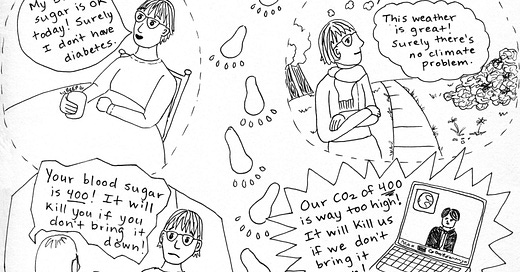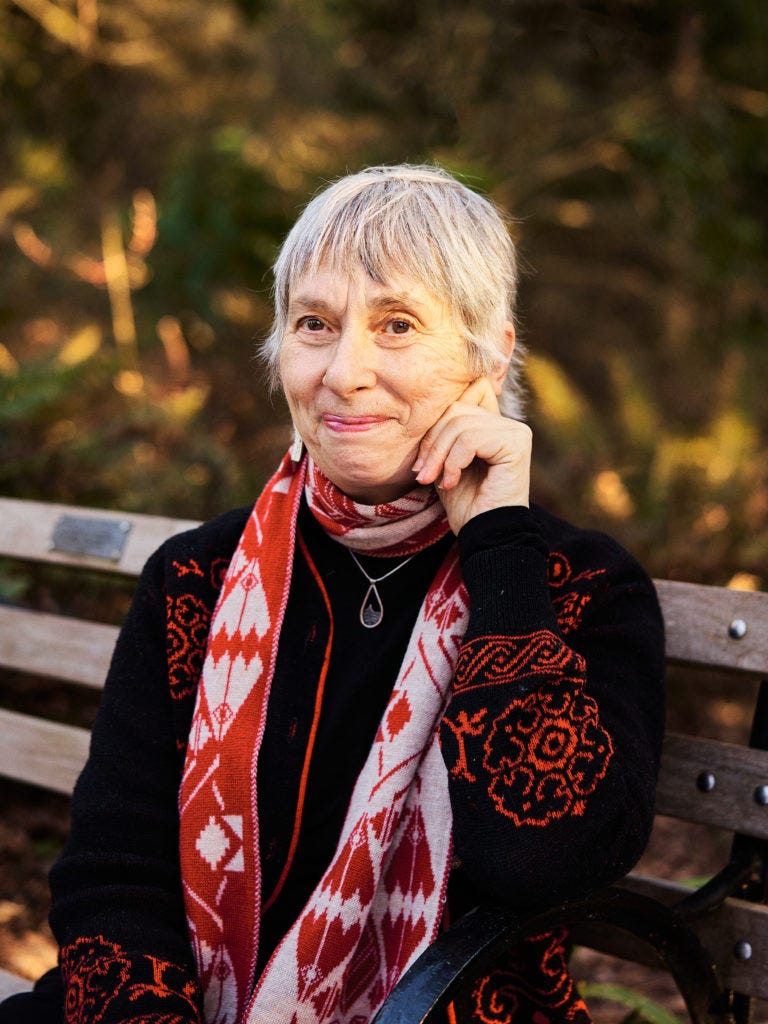Ranae Lenor Hanson told her students at Minneapolis College to go outside and sit under a tree. Her students rolled their eyes and thought this a strange assignment for a bunch of working class and immigrant folks. What were they going to get out of it? Certainly not a job. But gradually, the students did take on the job of observing nature, meditating upon it, journaling about it, and having the patience to focus their awareness on a single organism long enough to begin to understand the oneness of all creation.
“To know a tree,” Hanson writes in her new award-winning memoir Watershed: Attending to Body and Earth in Distress, “you have to walk. You have to stop. You need to put your hands on its bark and look up into its boughs.”
Hanson had been a naturalist all her life, having grown up in northern Minnesota, camping and exploring the then pristine Boundary Waters.
My dad was a teacher, but his back wasn’t strong enough to inherit the farm. . . so he got a teaching job in industrial arts on the Iron Range near Ely. Boundary Waters and mining. . .We picked berries from the woods and heated our house with downed trees.
Hanson’s parents were early Rachel Carson followers, but there’s nothing like getting hit with a life-threatening illness to sharpen your perceptions and force you to confront reality.
Suddenly, Hanson could no longer deny that her extreme thirst and disorientation required a trip to the emergency room and a diagnosis of type 1 diabetes. She had to attend to her body and sit with it long enough to realize that she was intricately tied to the natural world. And that world was changing.
After all, Hanson’s international writing students popped into her office every day with their stories.
As a young child in Ethiopia, Deartu’s grandmother told her about climate change. “She wasn’t educated—not in the way of being able to read. But she listened to the land. She could grow anything, and she loved trees. Oromo people always loved trees.”
And she loved to swim.
“Swim?” Deartu asked?
Their landscape had no water. No one knew how to swim.
Her grandmother pointed to the valley and described a large lake that once held hippopotamuses. But once the British came with cars, tractors, and fertilizer, the lake gradually dried up. The trees died. The rains stopped and the cattle died.
By observing her own woods, Hanson knew that her home in northern Minnesota was warming up:
Northern Minnesota has lost a lot of winter. It has heated up far faster than southern Minnesota. I think faster than Iowa. . . If you’re an old-timer in the northern part of the state, you know that this is not right. That was very disturbing to me.
But it wasn’t until Hanson’s own body began to dehydrate that she could perceive the totality of the shift in our planet. The parallelism clicks at the end of the book. We witness Hanson going about her day setting her schedule of blood checks, diet and exercise. Then Hanson prompts readers to stop and check in on their environment. She tells us to:
1. Stop. Just stop. Look around. What is here? Where did the water wash away the topsoil? Could a rain garden go there? Maybe a dishpan to catch some of the torrent?
2. Then breathe. After some breaths, make a plan for restoring your place. Pick up fallen branches; water trees; find a cool place; walk to a nearby water source.
3. Listen to other beings and watch the flow of the streams. Consult elders who know this land. Perhaps they will say, “Run from this place because the rivers are going.” Perhaps they will say “Stay put. Mother Earth is rebalancing. Trust her.”
4. When grief comes, as it will, and when sorrow flows, allow. But put limits around your tears. There are people younger and more vulnerable who need companions. Be present to them and show them ways to care for their waters.
Diabetes made Hanson more comfortable with solitude, and in that space, she learned to embrace the spark of energy in all living things. She recalled a campus visit by Winona LaDuke who reminded the community that Natives consider nearly everything alive—rocks, soil, the wind, the trees with their rustling leaves.
We can come to know other life forms, Hanson says, across species, even across time. And once we know something, we can better care for it.
Try it. As you walk, talk to the trees. Learn the names of plants, or give them names yourself. It’s harder to ignore a being once you can speak its name.
An educator and committed climate activist, Renae Lenor Hanson taught writing and global studies at Minneapolis College for thirty-one years. She is a member of the Climate Land Leaders based in the Twin Cities.
Please support my colleagues in the Iowa Writers Collaborative. Great writers and wonderful human beings:








This is so good. I love the compassionate plea to learn the names of plants. To name it, we have to really see it, and that is the beginning of love.
Love the drawing and captions. Brilliant.